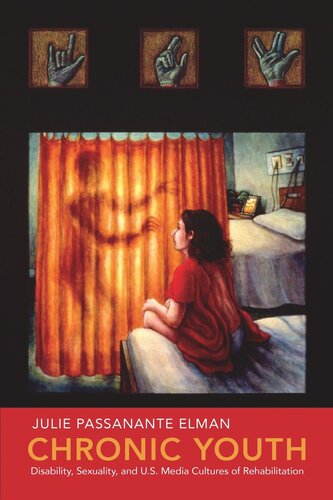

Most ebook files are in PDF format, so you can easily read them using various software such as Foxit Reader or directly on the Google Chrome browser.
Some ebook files are released by publishers in other formats such as .awz, .mobi, .epub, .fb2, etc. You may need to install specific software to read these formats on mobile/PC, such as Calibre.
Please read the tutorial at this link: https://ebookbell.com/faq
We offer FREE conversion to the popular formats you request; however, this may take some time. Therefore, right after payment, please email us, and we will try to provide the service as quickly as possible.
For some exceptional file formats or broken links (if any), please refrain from opening any disputes. Instead, email us first, and we will try to assist within a maximum of 6 hours.
EbookBell Team

4.4
22 reviewsThe teenager has often appeared in culture as an anxious figure,
the repository for American dreams and worst nightmares, at once on the brink
of success and imminent failure. Spotlighting the “troubled teen” as a site of
pop cultural, medical, and governmental intervention, Chronic Youth
traces the teenager as a figure through which broad threats to the normative
order have been negotiated and contained.
Examining television, popular novels, science journalism, new
media, and public policy, Julie Passanante Elman shows how the teenager became
a cultural touchstone for shifting notions of able-bodiedness,
heteronormativity, and neoliberalism in the late twentieth century. By the late
1970s, media industries as well as policymakers began developing new problem-driven
‘edutainment’ prominently featuring narratives of disability—from the
immunocompromised The Boy in the Plastic Bubble to ABC’s After School
Specials and teen sick-lit. Although this conjoining of disability
and adolescence began as a storytelling convention, disability became much more
than a metaphor as the process of medicalizing adolescence intensified by the
1990s, with parenting books containing neuro-scientific warnings about the
incomplete and volatile “teen brain.” Undertaking a cultural history of youth
that combines disability, queer, feminist, and comparative media studies, Elman
offers a provocative new account of how American cultural producers,
policymakers, and medical professionals have mobilized discourses of disability
to cast adolescence as a treatable “condition.” By tracing the teen’s uneven
passage from postwar rebel to 21st century patient, Chronic Youth shows
how teenagers became a lynchpin for a culture of perpetual rehabilitation and
neoliberal governmentality.